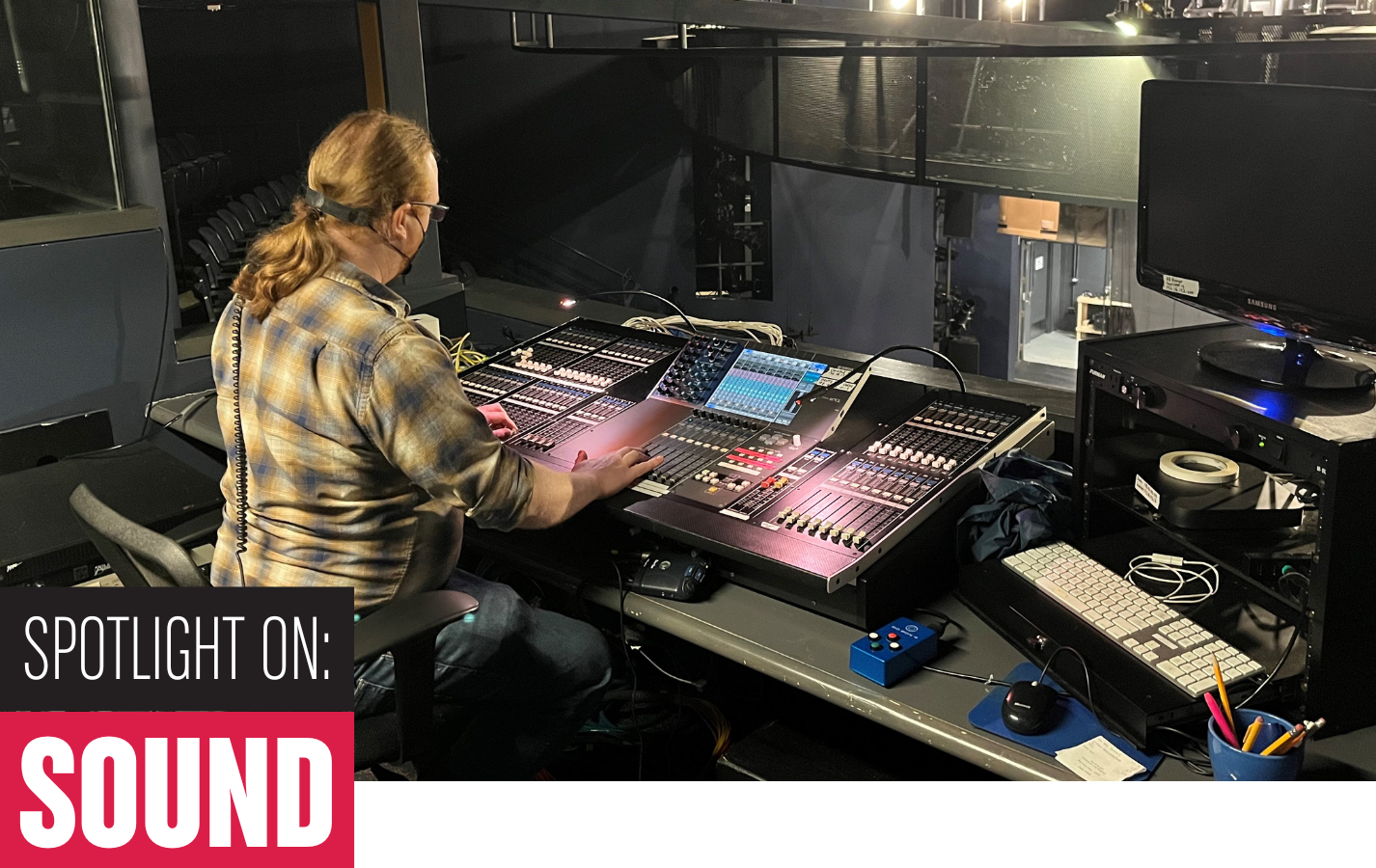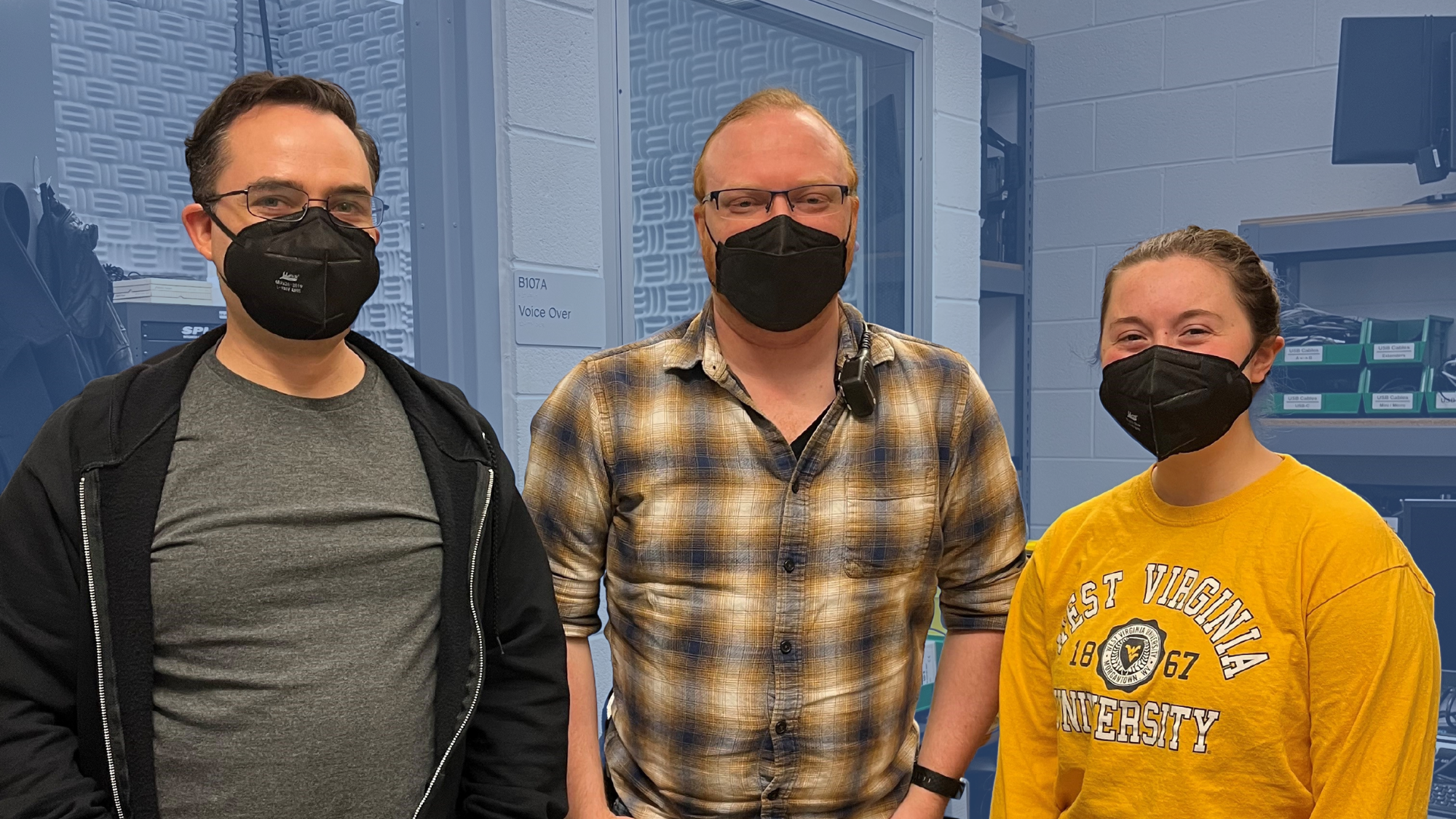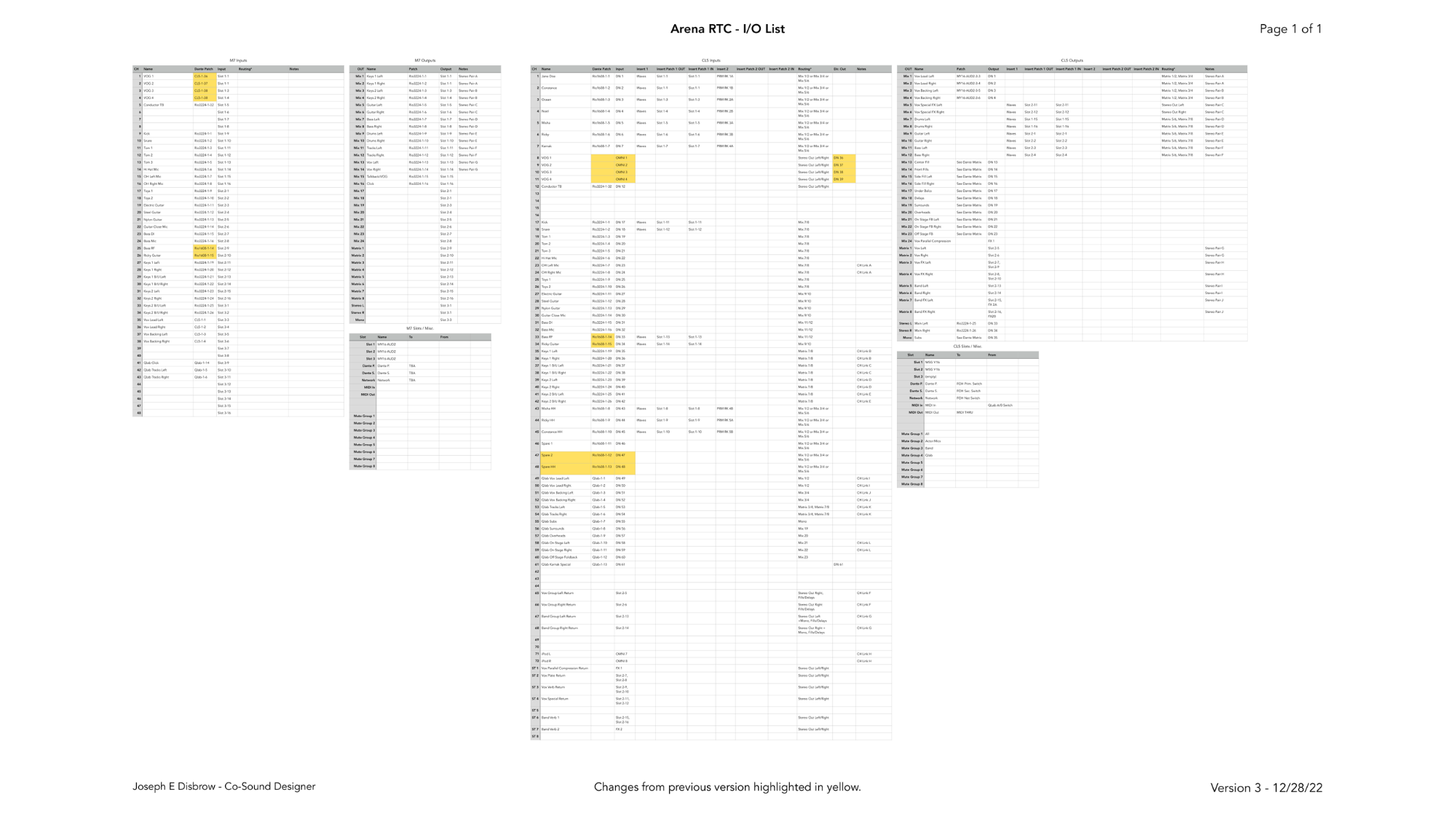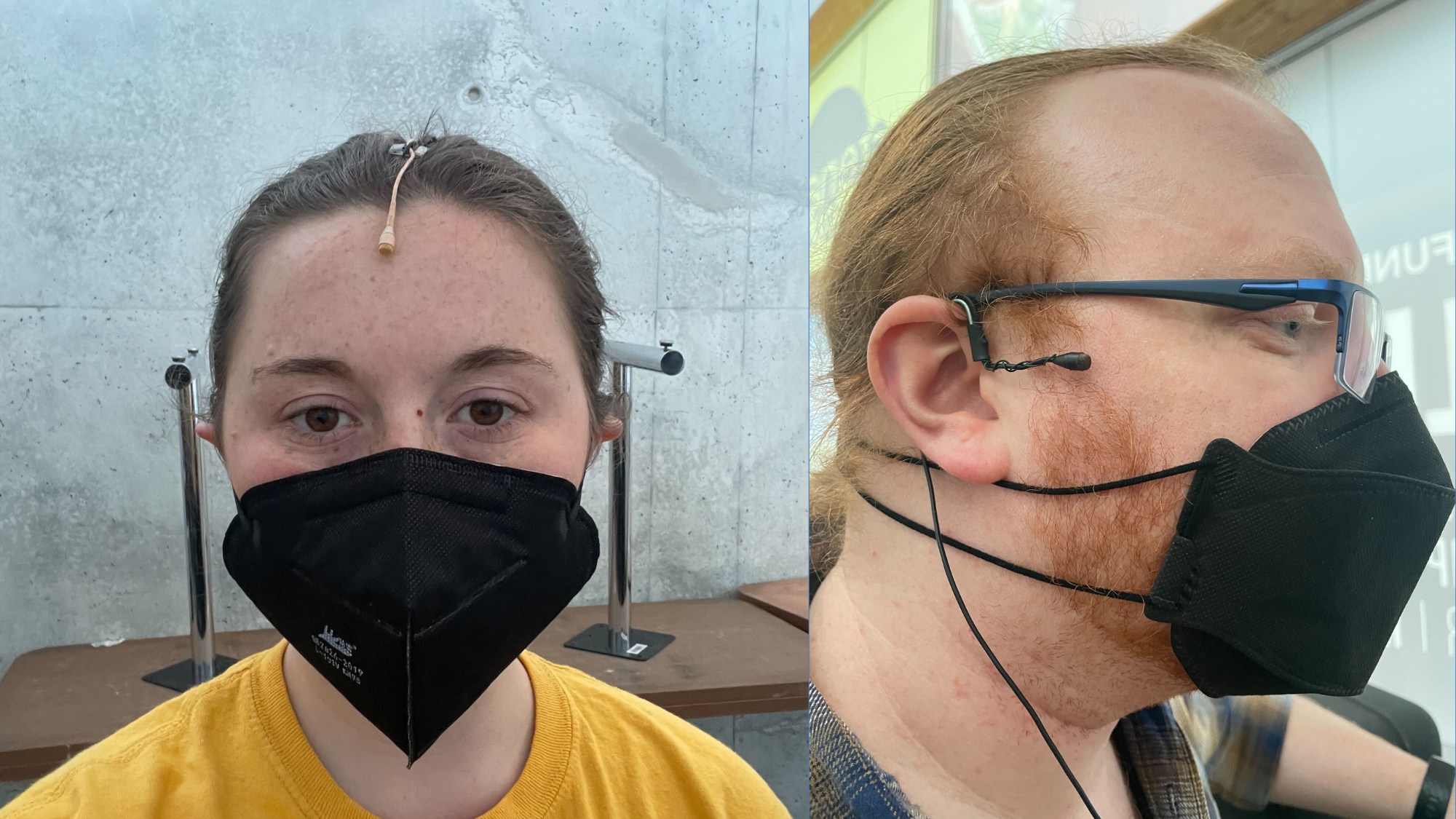
Writing Contributed by Kayla A. Warren and Rebecca Campana
How does a stage become another place, in a different time? Sets, props, lights, sound, and costumes: all of these production elements work together to create the world and tell the story of a play.

Ride the Cyclone Sound Team: (Left to Right) Brian Burchett, Drew Moberley, and Lex Allenbaugh
The Production Department at Arena Stage is made up of all the teams that create these elements. The Sound Team uses a wide range of skills, creativity, problem-solving, artistry, and teamwork to help make some of the theater magic you experience on stage.
Paperwork

As Arena’s sound and video supervisor, Brian Burchett begins the process by connecting with the production’s sound designer. He learns the designer’s vision and starts working on how it can be realized.
After discussing the space and finalizing the equipment within the given budget, he creates paperwork to be passed to the production’s A1 (Primary Audio Engineer), which for our production of Ride the Cyclone is Drew Moberley. The paperwork can consist of line diagrams or Excel spreadsheets that describe which microphone (mic) will be used, and where and what it gets plugged into.
Using the paperwork, the sound department begins installing speakers, wires, and mics. After all the sound components are in place, it is time to prepare the actors.
Rigging

For the actors to be heard, they need microphones. As Ride the Cyclone’s A2 (Secondary Audio Engineer), Lex Allenbaugh oversees each actor’s mic by keeping them fully charged and troubleshooting any problems that occur during the run.
One of her biggest tasks is making sure that the actors have the microphones properly placed on their bodies, a process known as rigging. She ensures that the mic pack and its wires are in a position on the actor where they are most comfortable, hidden, and secure throughout the entire production.
The most common places to rig are over the ear or on the forehead. However, sometimes, depending on the actor, the costume, or blocking, Lex may have to invent new ways to rig the microphone. Once the actors’ mics have been rigged, the team can control the levels of their sound.
Fun fact: when Drew was an A2, he once had to rig a mic along the frame of the actor’s glasses!
Mixing

The sound board is what controls the audio levels. Starting in tech rehearsals, Drew listens to the audio of the show and balances microphones to the correct levels, focusing on the shape and flow of the audio—a process known as mixing. In his notebook, he marks where each dial and slider should be during different points of the show to maintain the perfect mix of sounds.
While these notes are his guide, anything can happen during the show. Drew may need to raise an actor’s mic because they have a cold, or turn down a drummer’s mic because she got really into a certain song and played louder than usual.
The A1 needs to be ready to quickly turn a dial or move a slider at any point in the show, continuously performing a balancing act with the sound. If something becomes unbalanced, it could lead to feedback.
“Not being noticed during rehearsals or the show is the best compliment our sound team could receive.”
Sound in a Musical
Musicals require more work for the sound team than a straight play. There is usually additional equipment needed and many factors to consider based on where the sound comes from. The best way for the team to control audio is when it is released through speakers, but there is often a live band involved — and that comes with additional challenges.
When the music is played live, where the band is situated makes a big difference from the sound team’s perspective.
- Easiest Situation: Separate Rooms
- If the band is in a completely different room from the production, that is the easiest situation for the sound team, since all sound is coming from the speakers.
- Somewhat Difficult: Orchestra Pit
- If the band is in an orchestra pit, the team must juggle with sound coming through not only the speakers, but through the air as well.
- Hardest Situation: On Stage
- If the band is on stage, that is the most difficult situation to control because the music is being played right across from the audience.
Brian describes the team’s marker for success during the production: “Not being noticed during rehearsals or the show is the best compliment our sound team could receive.”
Ride the Cyclone presented a fun challenge for the Sound Team. Come see the show and experience their work as they inconspicuously perform their magic!




